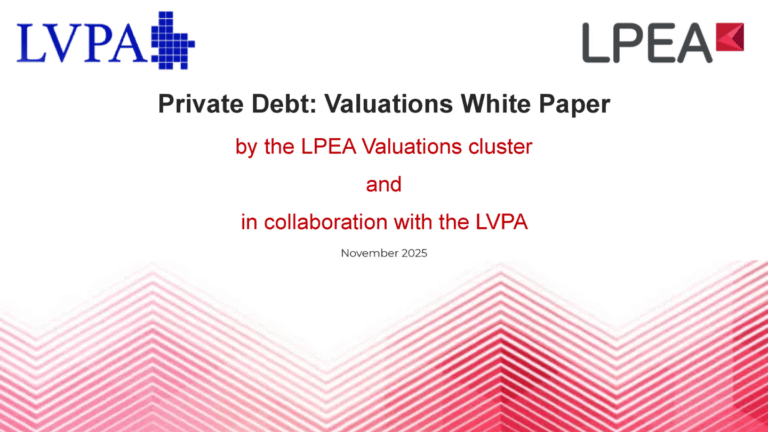By Dr. Oliver Heiland – Managing Director Finance in Motion Asset Management as published in Insight Out #28
Introduction:
Climate change and biodiversity loss have become the existential crises of our time. As policy, regulators and businesses work towards paradigm shifts like net-zero, a new taxonomy of climate, natural capital and sustainability investments, services, and solutions emerges. The Private Equity industry is uniquely positioned to leverage its capital and expertise to drive impactful investments.
From science to boardrooms
In 2000, late Nobel Prize laureate Paul J. Crutzen stood up at a scientific conference and proclaimed human induced changes in the earth system were of such deep impact and long duration that one could speak of a new epoch in Earth’s history – the Anthropocene. His intriguing concept profoundly shaped the way we look at climate change and loss of biodiversity, triggering more than 10,000 articles and 5,000 peer-reviewed publications. In its Global Risks Report 2022, the World Economic Forum ranks climate change and loss of biodiversity amongst the most severe threats to humanity over the next ten years. If no action is taken, Swiss RE calculated that the global economy could be set to lose up to 18% of GDP from climate change over the next thirty years. Biodiversity loss is more difficult to grasp due to its complexity and non-linear interdependencies with climate change. We are starting to realize that over half of the world’s total GDP with a value of approx. USD 44 trillion depends on nature and what’s referred to as ecosystem services.
Fast-forward to today, boardrooms and business strategies increasingly grapple with complex challenges associated with climate change and loss of biodiversity.
Net-Zero as game-changer for Private Equity
Inaugurated by the 2015 Paris Agreement, the net-zero movement has since created a lot of momentum for the aspiration to cap global temperatures at 1.5°C.
LPEA’s 2023 Insights conference with the broader conversation about the path to net-zero exemplified what this means for the Private Equity industry. While the 1.5°C goal is aspirational more than two decades out, we are on the path to net-zero today amidst a rapidly changing business environment.
Net-zero transformational drivers include, amongst others, the notion of climate change as a financial risk (TCDF), a global proliferation of climate-related reporting schemes (SFDR, CSRD, SEC climate reporting), and the corresponding need for vast amounts of high-quality data. And amidst these changes, the next wave of regulation addressing carbon pricing, carbon credits and carbon-border taxes (CBAM) is underway. All this brings about profound changes of culture, behaviour, and business practices across the Private Equity value chain (strategy, governance, investments).
All these factors require new ways of doing business for Private Equity portfolio companies to meet new climate-reporting standards, managing risks across their supply chains while being cognizant of fundamental shifts in carbon pricing and accounting. Not least, this will be important for carefully planning for successful exit scenarios based on decarbonization pathways and the availability of high-quality data demonstrating progress on implementation.
Net-zero investment opportunities
At the same time, this large-scale transformation also brings tremendous opportunities for the Private Equity industry to create long-term value. Achieving net-zero and the green transition will require huge capital expenditure until 2050, for which estimates range between USD 100 – 300 trillion – equalling 2.5%-4.5% of global GDP (International Energy Agency). This means that significant investment flows must be directed into a new taxonomy of climate, natural capital and sustainability assets, services, and solutions.
Leading economic blocks have created policy signals with the US’s Inflation Reduction Act (IRA) or the European Union’s Green Deal supporting the shift to net-zero. But the path to net-zero will not be decided in developed economies alone. Asian, African, Latin American, and Middle Eastern countries are among the most vulnerable to the effects of climate change, adding a human dimension to the global crisis. Many of these markets are still heavily reliant on carbon-intensive industries. Because net-zero investment opportunities will, to a greater extent arise in emerging markets, emerging market economies will require a greater share of investment capital to reach net-zero. While private capital has emerged as a driving force for progress toward the green transition, Private Equity in emerging markets is still in its early stages, often pioneered by specialised investment managers like Finance in Motion Asset Management Group. For a successful green transition in emerging markets, more investment will be needed for the net-zero transition, including natural capital solutions in emerging markets.
The rise of natural capital
Much of net-zero’s focus is directed on actions targeting carbon emissions reductions and mitigating and adapting to climate change. This includes the replacement of fossil fuel-based infrastructure with solar, wind, and other renewable energy sources, as well as investments for the development of solutions in hard-to-abate sectors such as steel, cement, aviation, or shipping.
Yet, it will be equally important to devise scalable technological and natural capital solutions for carbon dioxide removal (CDR). Technological solutions such as direct air capture have the potential to play an important role in net zero. Presently, 19 plants are operating worldwide, capturing approx. 0.01 Mt CO2/year, but the technology is still expensive and will need to demonstrate the financial viability of large-scale DAC (International Energy Agency, Direct Air Capture 2023). On the other hand, natural capital solutions are often overlooked, although they are available and offer increasingly financially viable investment opportunities paired with socio-economic benefits.
Today, natural capital has emerged as new trend in asset management allowing to meet bespoke investment requirements with innovative investment solutions. Natural capital solutions include the improvement of business practices for managing natural resources such as forests, mangroves or peatlands more efficiently, with one goal being to increase carbon storage efficiency. Finance in Motion Asset Management Group’s investments include for example reforestation and improved management practices to increase the carbon stored in biological assets. Sustainable agriculture investments offer significant optimization potential by decreasing fertilizer use to reduce carbon emissions. Another example is the restoration of coastal wetlands to store more carbon and improve natural flood protection. For land-based assets such as investments in timber and agriculture, carbon credit markets can help to achieve net-zero commitments and unlock carbon value for investors, always provided carbon credits operate on high integrity standards in credible and scalable markets. A relatively new type of instrument are biodiversity credits, for which important work is carried out by the Taskforce on Nature Markets (Biodiversity Credit Markets, 2023). These types of economic instrument are meant to support funding of long-term nature conservation and restoration projects such as habitat protection, preservation of sanctuaries or restoration of wetlands. While biodiversity credits are still in their infancy and operate on a limited scale in countries such as Colombia, Australia, or New Zealand, they have the potential to unlock greater flows of capital for nature-positive investments.
Closing with Nobel Prize laureate Paul J. Crutzen, by looking at our cultural, environmental, and technological advancements as species the Anthropocene also offers reasons to be hopeful. For Private Equity, net-zero and the emergence of natural capital offers the potential to turn challenges presented by climate change and loss of biodiversity into opportunities to create long term value.
What is natural capital?
The planetary stock of natural resources – including geology, soil, air, water, and all living organisms. Natural capital provides ecosystem services such as crop pollination, flood protection, or carbon storage. The World Economic Forum estimated (New Nature Report 2020), that alone transitions in food, land, and ocean use could deliver up to 3.5 trillion of annual business opportunities and 190 million jobs by 2030.




